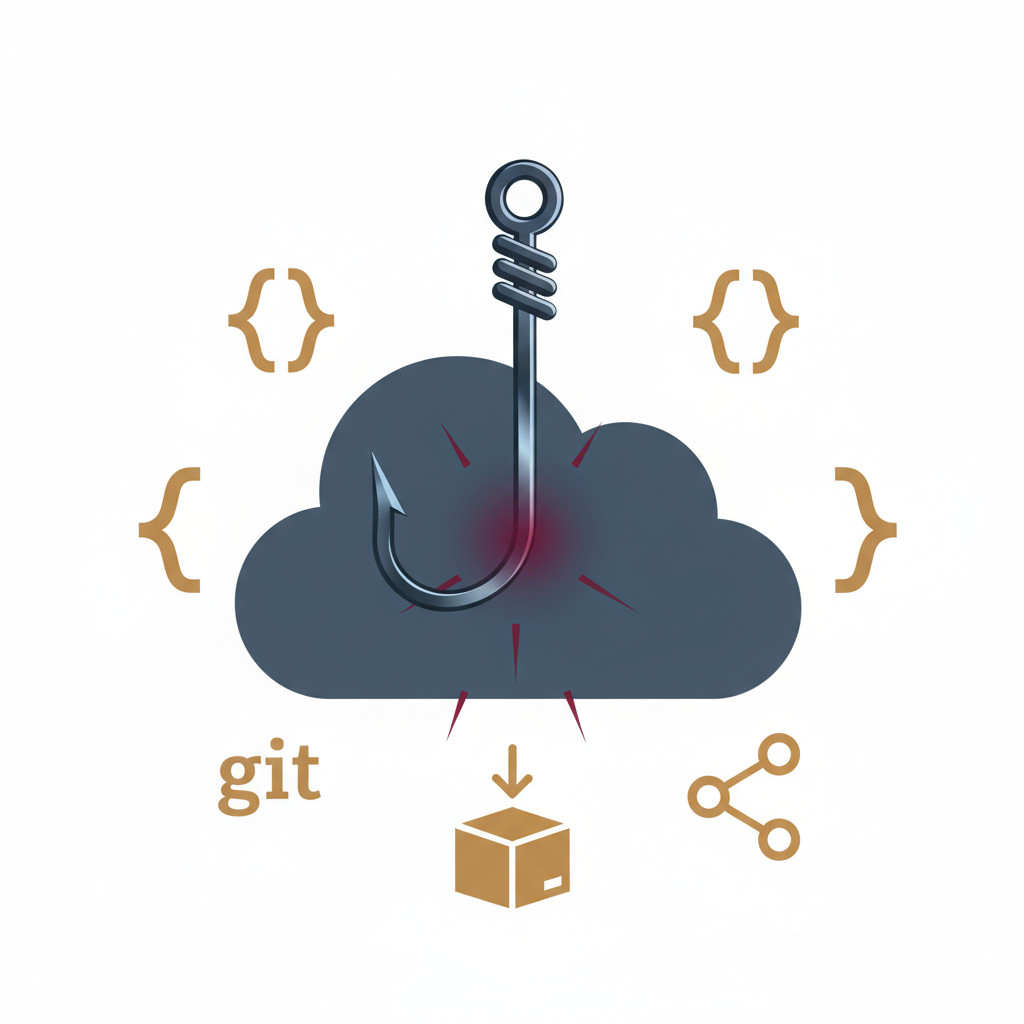Phishing Campaigns and Defense in Cloud Hosted and Open Source Ecosystems
Phishing campaigns and defense in cloud hosted and open source ecosystems must be a priority for developers and teams. In short, phishing campaigns use fraudulent emails or cloned sites to trick people into revealing credentials. Because cloud hosted services and open source supply chains amplify trust, attackers scale impact rapidly.
Therefore, this article will walk through practical defenses including:
- Email authentication and monitoring such as SPF, DKIM, and DMARC
- Brand and domain intelligence using RDAP and typosquatting detection
- Code and package scrutiny for open source supply chain risks
- Protections against AI generated and live chat phishing
- Policies to restrict unsolicited remote desktop instructions like Remote Rescue
- Multi-factor authentication and secure onboarding
- Incident response steps informed by threat intelligence platforms such as Group-IB
With these measures, readers can identify attacks early, block fraudulent portals in real time, reduce account takeover and financial fraud risk, and protect developer ecosystems and operations.

Phishing campaigns and defense in cloud-hosted and open-source ecosystems
Phishing adapts to the tools developers and organizations use every day. Attackers exploit trust in hosted services and open-source projects, because many teams allow cross account access and automated workflows. Consequently, a single successful phish can cascade through CI pipelines, package registries, and production systems. In this section, we explain how these campaigns operate and why they pose a high risk to modern software supply chains.
At scale, attackers combine social engineering with infrastructure abuse. For example, adversaries register lookalike domains and host pages on permissive platforms. These pages often use realistic branding and chat widgets to seem legitimate. Because some corporate allowlists include vendor domains, phishing sites on Cloudflare Pages can evade simple blocks. See Cloudflare Pages documentation for context: Cloudflare Pages Documentation.
Email remains a primary vector. Phishing messages spoof support or security notices, and they can pass SPF, DKIM, and DMARC checks. However, attackers still trick developers into revealing tokens, passwords, or 2FA codes. Learn more about DMARC and email authentication here: DMARC and Email Authentication.
Common phishing attack types in these environments include
- Brand impersonation and typosquatting
- Attackers register domains like npmjs[.]help to mimic official portals. See a recent incident reporting example: Bleeping Computer Incident Report
- AI-generated landing pages and support chat scams
- Fraudulent chat operators harvest phone numbers and credentials in real time
- Remote-access social engineering
- Victims are coerced to run legitimate tools such as Remote Rescue, which grants attackers control
- Malicious package or dependency injection
- Compromised developer accounts push code that includes clipboard clippers and backdoors
Potential impacts on businesses and users
- Account takeover and financial fraud
- Attackers redirect payments and transfer funds after hijacking sessions
- Supply chain contamination
- Malicious code propagates via widely used packages or CI/CD artifacts
- Data theft and credential exposure
- Secrets in repositories and pipelines leak to adversaries
- Operational disruption and reputational damage
- Incidents force emergency rollbacks and public notices
- Regulatory and contractual consequences
- Breach can trigger fines and breach reporting obligations
Because open-source and cloud hosting interconnect, phishing effects compound. Therefore, defenders must monitor domains, vet onboarding, and harden email and package controls. Moreover, the article will next explore concrete defenses and detection techniques to reduce these risks.
| Defense Mechanism | Description | Advantages | Challenges |
|---|---|---|---|
| Email authentication (SPF, DKIM, DMARC) | Validates sender identity and flags spoofed mail. | Low operational cost; widely supported. | Misconfigurations reduce effectiveness; attackers use lookalike domains. |
| Domain and brand monitoring (RDAP, typosquatting detection) | Tracks new registrations and lookalike domains. | Detects impersonation fast; prevents fraud at scale. | High false positive rate; requires continuous tuning. |
| Web runtime protections (WAF, allowlists, CSP) | Blocks malicious pages and suspicious requests. | Rapid mitigation of hosted phishing pages. | Whitelists can permit abuse; evasive hosting bypasses rules. |
| Package scanning and code signing (SBOM, package scanners) | Scans packages for malicious code and verifies authorship. | Stops malicious dependencies; boosts supply chain trust. | Complex for polyglot projects; false negatives occur. |
| CI/CD hardening and secrets scanning | Prevents token leakage and unauthorized deployments. | Stops attackers from moving laterally in pipelines. | Dev friction; secret sprawl and legacy systems remain. |
| Threat intelligence and ML filters (e.g., BEP style) | Correlates signals and uses behavioral models to block phishing. | Detects social engineering despite valid SPF/DKIM. | Needs quality feeds; attackers adapt models quickly. |
| User training and phishing simulations | Trains developers and staff to spot scams. | Improves human detection rates; low cost. | Training fatigue; social engineering still succeeds. |
| Endpoint and remote access controls (MFA, restrict Remote Rescue) | Limits attacker control after initial compromise. | Reduces account takeover and unauthorized RDP sessions. | Usability trade offs; legacy remote tools complicate rollout. |
Effective strategies for Phishing campaigns and defense in cloud-hosted and open-source ecosystems
Defenders must build layered controls to counter modern phishing. First, implement strong email controls and filtering. For example, enforce SPF, DKIM, and DMARC and couple them with advanced filtering. However, attackers can still pass those checks, so add ML driven filters and reputation scoring. See DMARC guidance for implementation: DMARC Guidance.
Second, require multi factor authentication across developer and admin accounts. Use hardware tokens or FIDO2 where possible, because they resist phishing better than SMS. Moreover, apply conditional access and session limits to reduce lateral movement. NIST provides useful authentication guidance: NIST Authentication Guidance.
Third, harden package and CI/CD pipelines. Enforce code signing and adopt SBOMs to track dependencies. Also run automated package scanners and secrets detection in pull requests. For example, when an attacker injected a JavaScript clipper into NPM packages, continuous scanning would flag unexpected clipboard access. Read a case summary here: Case Summary.
Fourth, monitor domains and brand impersonation. Use RDAP feeds and typosquatting detection to catch lookalike registrations. Because cloud platforms can host phishing pages quickly, integrate domain alerts with takedown workflows. Also maintain allowlist hygiene so vendor domains do not bypass security controls.
Fifth, control remote access and endpoint risk. Ban unsolicited remote support requests, and restrict the use of tools such as Remote Rescue. Enforce endpoint protection, application allowlisting, and MFA on remote sessions. As a result, attackers cannot pivot easily after initial compromise.
Sixth, train developers and run realistic simulations. Teach staff to verify URLs, check RDAP records, and avoid sharing MFA codes. Also simulate live chat scams and support impersonation scenarios to reduce human error.
Seventh, build an incident response playbook. Include rapid domain takedown steps, package revocation, and secret rotation procedures. Furthermore, log all pipeline actions and preserve forensic artifacts to speed recovery.
Practical checklist
- Enforce SPF DKIM DMARC and advanced filters
- Require hardware backed MFA and conditional access
- Scan packages, sign releases, and publish SBOMs
- Monitor RDAP and automate takedowns for typosquats
- Restrict remote sessions and require preapproved support flows
- Run phishing simulations and developer training
- Prepare rapid IR playbooks and secret rotation processes
Together, these measures reduce the success of social engineering, stop supply chain contamination, and limit account takeover risk. Therefore, organizations can protect cloud hosted services and open source ecosystems more effectively.
Phishing Threats and Defenses
Phishing remains a top threat to cloud-hosted services and open-source ecosystems. Attackers use brand impersonation, typosquatting, AI-generated pages, and live chat scams. As a result, supply chains, developer accounts, and production systems face real risk.
Defenders should combine email authentication, domain monitoring, and ML driven filters. Moreover, enforce hardware backed multi factor authentication and strict CI/CD controls. For example, scanning packages and publishing SBOMs reduces the chance of malicious dependencies. However, human vigilance also matters; training and simulations cut success rates.
Prepare rapid incident playbooks that rotate secrets and revoke compromised packages. Integrate domain alerts with takedown workflows to limit phishing page lifetimes. Because attackers adapt quickly, continuous threat intelligence and tuning remain essential.
Partner with tools that reduce support load and improve automation. Velocity Plugins specializes in AI driven WooCommerce plugins that boost conversion and cut support costs. Visit Velocity Plugins to learn more about their offerings. Notably, Velocity Chat delivers an advanced AI chatbot that handles customer queries. As a result, teams free developer time for high priority security work. Stay proactive, because layered defenses and awareness stop most phishing attacks.
Frequently Asked Questions (FAQs)
Why are cloud-hosted and open-source ecosystems targeted by phishing?
Attackers target these ecosystems because they scale trust quickly. For example, a compromised developer account can push malicious code to many users. Moreover, hosted platforms and vendor allowlists let fraudulent pages evade simple blocks. Therefore, an initial credential theft can cascade through CI, registries, and production systems.
Will SPF, DKIM, and DMARC stop phishing completely?
They help, because they validate sender identity and reduce spoofing. However, attackers still use lookalike domains and newly registered sites. As a result, combine email auth with ML filters, domain monitoring, and behavioral signals for best results.
What immediate protections should development teams adopt?
Require hardware backed multi factor authentication and conditional access. Also, scan packages, publish SBOMs, and sign releases. Furthermore, enforce secrets scanning in CI and restrict token scope to limit blast radius.
Are live chat scams and remote support real threats?
Yes. Fraudulent chat operators often ask for codes or remote access. Therefore, ban unsolicited remote sessions and require preapproved support channels. In addition, train staff to verify domain names and RDAP records before sharing credentials.
What steps should I take after a suspected compromise?
Act quickly. Rotate secrets and revoke tokens immediately. Next, remove or unpublish affected packages and block malicious domains. Finally, preserve logs, notify stakeholders, and engage trusted threat intelligence or takedown services to speed recovery.



